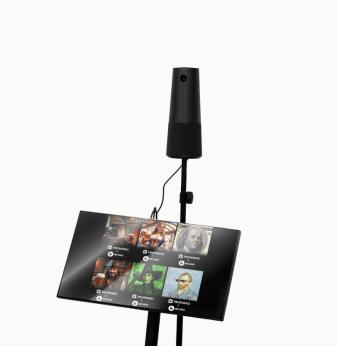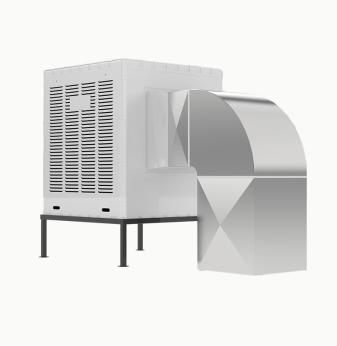Embedded ML Trends 2026: Smarter Edge Devices & Evolving AI Frameworks

As industries continue to embrace edge computing and AI, embedded machine learning (ML) is stepping into a new era. In 2026, the convergence of optimized hardware, advanced algorithms, and new deployment models will reshape the way developers build and deploy intelligent systems at the edge. From ultra-efficient microcontrollers to low-power neural networks, embedded ML is making edge devices smarter, faster, and more secure.
In this article, we explore the top trends shaping the future of embedded machine learning for hardware and software developers.
1. Model Compression Techniques for Resource-Constrained Devices
One of the biggest challenges in embedded ML is fitting powerful models into limited resources. In 2026, model compression is no longer optional—it's foundational.
Techniques such as:
- Quantization (reducing bit-widths)
- Pruning (removing unnecessary weights)
- Knowledge distillation (training smaller models using larger ones)
- Weight clustering and sparsity
How can I deploy a deep learning model on an MCU with limited RAM and storage?
Use a combination of quantization (e.g., INT8), pruning, and model distillation to reduce size and compute requirements, and rely on frameworks like TensorFlow Lite for Microcontrollers or CMSIS-NN.
2. Evolving ML Frameworks Optimized for Embedded
In 2026, ML frameworks are increasingly optimized for embedded targets, enabling developers to go from training to deployment seamlessly.
Popular embedded ML frameworks include:
- TensorFlow Lite Micro (TFLM)
- TVM with microTVM backend
- Edge Impulse
- MicroML tools integrated with Zephyr RTOS and ARM CMSIS
What is the best framework for embedded machine learning on ARM Cortex-M processors?
TensorFlow Lite Micro and CMSIS-NN are highly optimized for ARM Cortex-M devices, offering efficient kernels, model conversion tools, and real-time performance.
3. TinyML Becomes Mainstream in Consumer & Industrial Devices
TinyML—the application of ML on ultra-low-power devices—continues its rise across verticals:
- Consumer electronics: wake-word detection, gesture recognition, personalized audio
- Industrial IoT: condition monitoring, predictive maintenance
- Healthcare: wearable diagnostics, anomaly detection
In 2026, power-optimized AI accelerators and smart sensors are making TinyML more accessible to OEMs and developers. Boards like Arduino Nicla, Raspberry Pi RP2040, and Nordic's nRF series are used as development platforms.
What are some real-world applications of TinyML in manufacturing?
Vibration-based fault detection, motor temperature monitoring, and visual inspection using camera sensors with ML inference on the edge.
4. Edge Training & Personalization at the Device Level
Traditionally, ML models were trained in the cloud and deployed at the edge. In 2026, we're seeing a shift toward on-device training for:
- Personalization: adapting models to individual user behavior
- Privacy: local training avoids sharing sensitive data
- Connectivity limitations: critical for remote or disconnected environments
Tools like federated learning, online learning, and low-shot learning are now adapted for embedded use cases.
Can an embedded device fine-tune a model without cloud access?
Yes, with frameworks like TensorFlow Federated or PySyft, combined with memory-efficient retraining techniques, devices can locally adjust model weights for personalization.
5. Dedicated AI SoCs and Low-Power Hardware Accelerators
Chip vendors are racing to deliver domain-specific hardware for embedded ML. In 2026, SoCs with built-in AI cores are the norm, not the exception.
Examples include:
- NXP i.MX 9 series with eIQ support
- Renesas DRP-AI series
- Nordic nRF54H series with NPUs
- Ambiq's ultra-low-power AI processors
Which MCU is best for embedded ML with vision or audio tasks?
Look for MCUs with integrated NPUs, like NXP's i.MX RT1170 or Renesas' RZ/V2L, which accelerate convolutional layers and support ML libraries out of the box.

6. Real-Time Constraints Drive Optimization
Embedded ML must comply with strict latency, memory, and timing constraints. In 2026, development toolchains include:
- Real-time ML profilers to assess inference timing
- RTOS-integrated ML runtimes
- Event-driven ML models (e.g., spiking neural networks for sensory input)
How do I ensure that my ML model meets real-time deadlines on a Cortex-M target?
Use static memory allocation, time-aware scheduling with RTOS, and optimize inference graphs to run under worst-case latency budgets.
7. AI Model Security at the Edge
Security is a growing concern in embedded ML. Attacks like model inversion, evasion, or poisoning can compromise the integrity of intelligent devices.
In 2026, developers are adopting:
- Model watermarking to detect unauthorized usage
- Encrypted inference for secure execution
- Robustness testing against adversarial inputs
How do I protect an ML model running on my edge device from being reverse engineered?
Use techniques like obfuscation, model signing, encrypted weights, and secure enclaves on the hardware to safeguard the IP.
Conclusion
Embedded machine learning is no longer experimental—it’s production-ready, efficient, and essential. The trends we’ve outlined reflect the deep integration of AI into edge systems across every industry. By adopting the right frameworks, hardware platforms, and security practices, companies can deploy smarter, more responsive, and energy-efficient devices.
Looking to build an ML-powered edge device in 2026? Our engineering team at Promwad can guide you from architecture to deployment—with optimized designs tailored for your power, performance, and certification needs.
Our Case Studies








